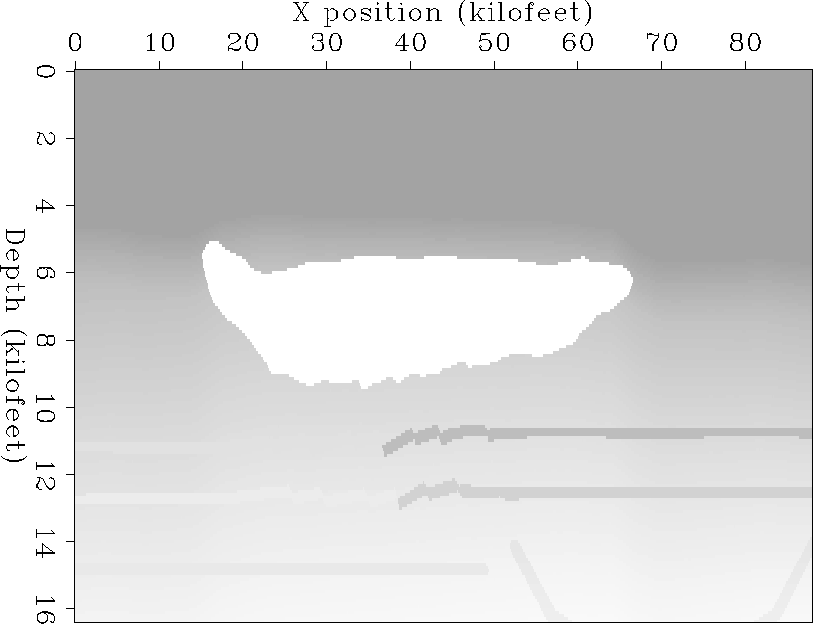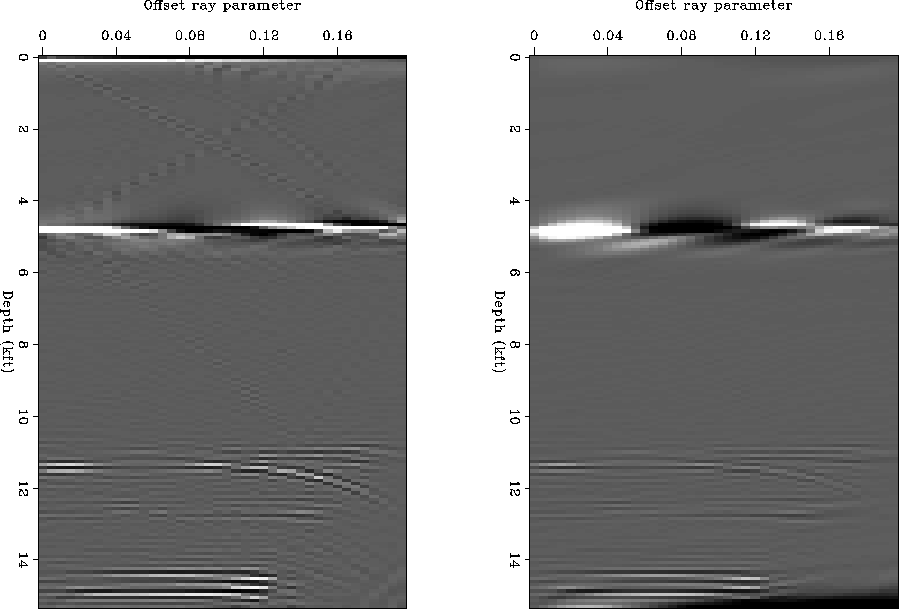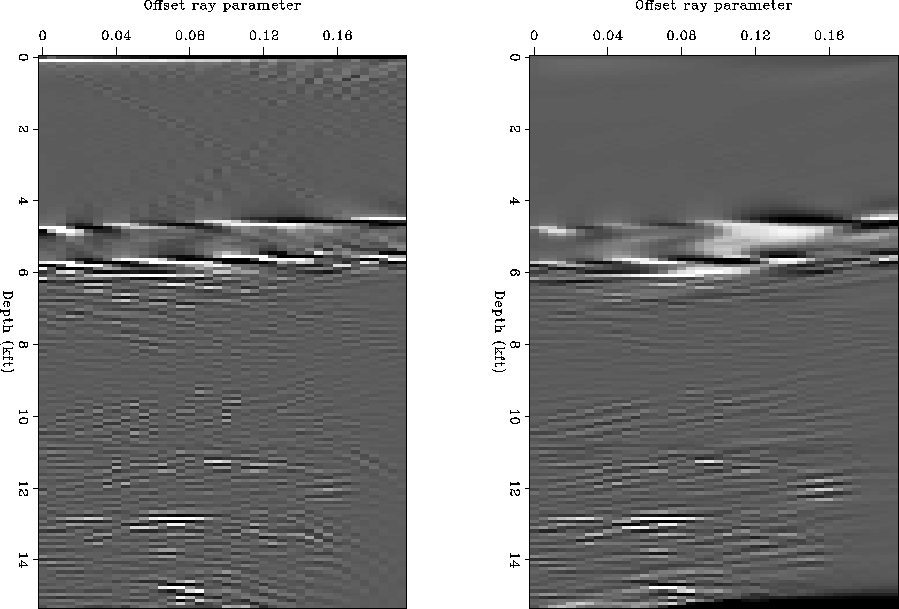 |
Figure 7 P-wave velocity model of the BP multiple dataset.
We also applied this method to a synthetic multiple dataset provided to us by BP. This is a complicated dataset designed to have extremely nasty multiples. Its velocity model is in Figure 7. Once again, we can expect illumination problems under the edges of the salt body Muerdter et al. (1996). Even after only one iteration, the RAD preconditioned inversion has produced CIGs that are cleaner and more continuous than RAD migration.
Figure 8 displays a CIG taken from a point away from the salt body. The migrated result has good, continuous reflectors, but there are artifacts between 6 kilofeet and 10 kilofeet and there is a multiple at depth 11.5 kilofeet. The inversion result cleans these artifacts up and attenuates the multiple.
Figure 9 shows a CIG taken at the right edge of the salt body. There are many artifacts and multiples in both the migrated and the inversion results, but the strength of the artifacts and the multiples is reduced in the preconditioned result. Preconditioning has also made the event from the reflector below the salt at depth 13 kilofeet more continuous.
 |
 |
 |